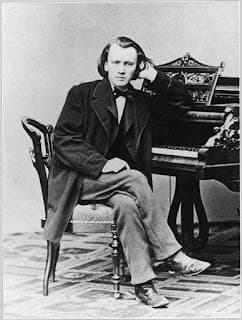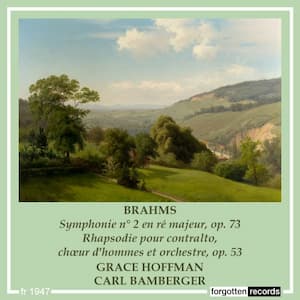Johannes Brahms would not do well on Facebook, Twitter, or TikTok, that’s for sure. Of course, he is one of the most widely performed and beloved composers of all time. In the historiography of music, he stands alongside Johann Sebastian
Brahms
The combination of two violins, two violas, and two cellos is a lush and almost orchestral sound. Most musicians I know relish the opportunity to play string sextets. Even so, these works are not played as often as other chamber
The relationship between Robert Schumann, Clara Schumann, and Johannes Brahms started out as student comes to work with mentor but evolves into something more complex. Brahms had been introduced to the Schumanns in October 1853 with a letter of introduction
In his catalogue, Johannes Brahms (1833-1897) only has two concert overtures and they were both written the same year: 1880. The first is the well-known Academic Festival Overture, written as a thank-you following the awarding of an honorary degree by
In 1777, the German poet Johann von Goethe was traveling in the Harz mountains in the winter. He ascended the Brocken, the highest peak in the Harz, arriving at midday, and gazed out on a white world, with the landscape
Fritz Steinbach (1855-1916), none withstanding Hans von Bülow, was regarded as the foremost conductor of Brahms’ music. We know that they first met when Steinbach attempted to persuade Brahms to take him on as a student in 1875. Brahms declined,
Johannes Brahms was well connected. He befriended and collaborated with hundreds of people during his career, including fellow musicians and composers, publishers and artists, poets whose texts he set to music, and even rulers of certain German states with whom
Johannes Brahms was certainly open to life’s pleasures, and he would never decline a good meal. He once told a friend, “I live in Vienna as if I were in the country,” and he ate his lunch at the same








